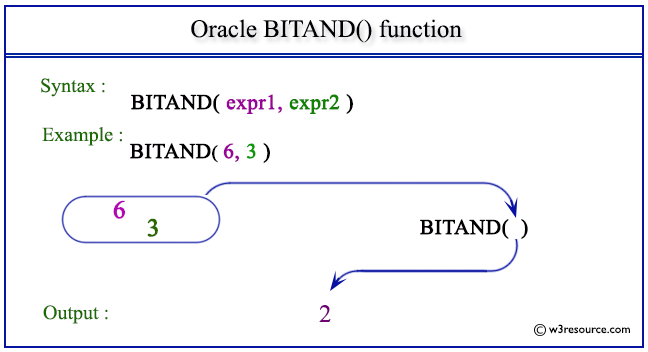Oracle BITAND() function
Description
This BITAND() function returns the output as bitwise AND of the inputs, the inputs, and its output are treats as vectors of bits.
The types of inputs are the number, and the result is of type number. If either argument to BITAND is NULL, the result is NULL.
The arguments must be in the range -(2(n-1)) .. ((2(n-1))-1). If an argument is out of this range, the result is undefined.
Uses of Oracle BITAND() Function
- Bitwise Operations: Perform bitwise AND operations on numerical values.
- Data Masking: Useful for masking specific bits within binary data.
- Binary Flag Management: Manage and evaluate binary flags or settings.
- Low-Level Data Manipulation: Essential for operations requiring direct manipulation of binary data.
- Conditional Logic: Implement complex conditional checks based on binary values.
- Hardware Interfacing: Applied in systems programming for interfacing with hardware that uses binary signaling.
Syntax:
BITAND(expr1, expr2)
Arguments:
| Name | Description |
|---|---|
| expr1 | A number. |
| expr2 | A number. |
The types of expr1 and expr2 are NUMBER, and the result is of type NUMBER.
Pictorial Presentation of BITAND() function

Example:
SELECT BITAND(6,3) FROM dual;
Here is the result.
BITAND(6,3)
-----------
2
